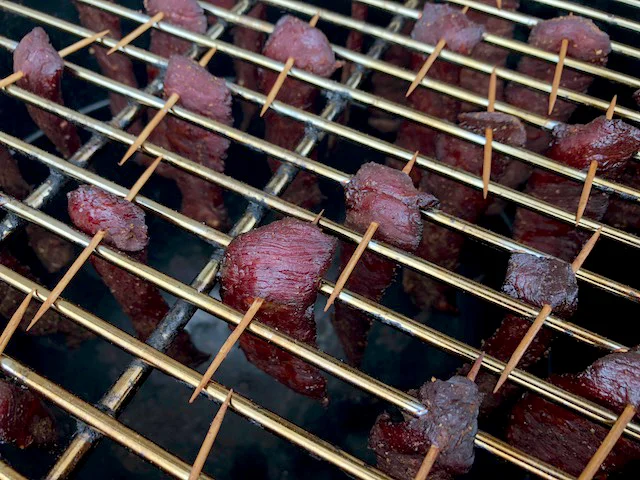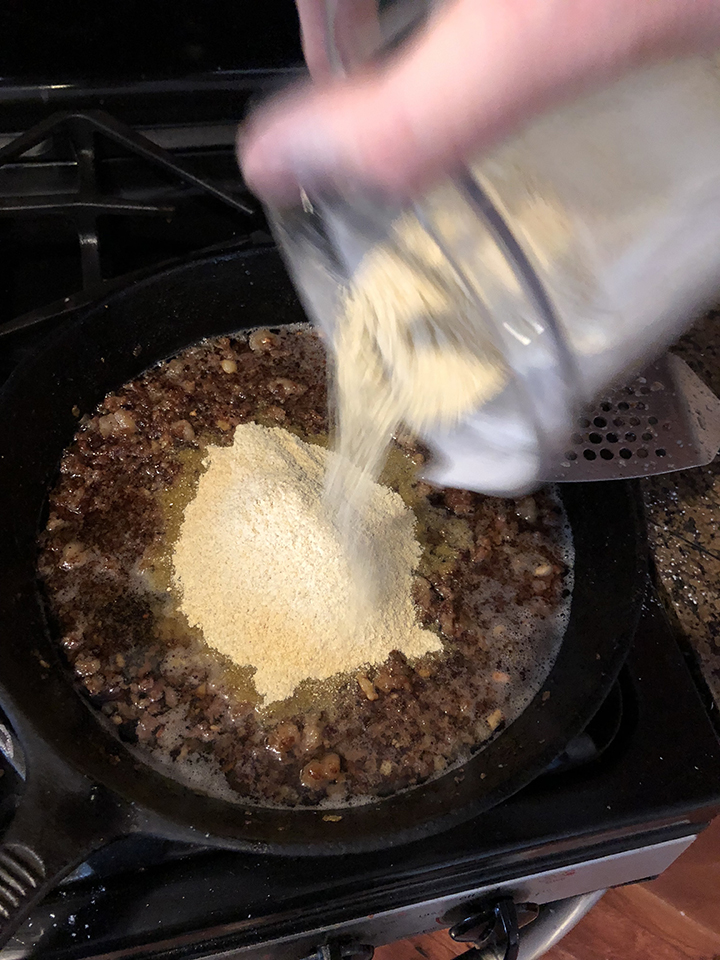I got a smoker last year. It's something that I've been interested in for a while. Not just because it make amazingly mouthwateringly delicious food. It's the tradition of food preservation that I found compelling. Smoking foods to preserve them has been used for a very long time and I wanted to add it to my list of traditional skills.
I got in my head that I wanted to try making smoked beef jerky. Regularly beef jerky isn't my go to snack. I generally find it to be too sweet, or too soy saucey, or something. But I do like the idea of preserving meat that way, and I figured if I had more control over the recipe it might turn out more to my liking.
I read a ton of recipes. There are no shortage of jerky recipes out there. 99% of them start with a ton of soy sauce. This has never made any sense to me. I know Lewis and Clark subsisted on a lot of dried meats, and I KNOW they weren't lugging around barrels of soy sauce. It just doesn't seem very traditional to me. So I made my own recipe with apple cider vinegar instead of soy sauce.
Before I get to the recipe, let's talk about the smoker. I'm using a Weber charcoal smoker. I call it the R2-D2 model. Not sure what it's really called. I modded my by added 4 screws near the top which allows you to put the meat rack up higher. It worked great for hanging jerky.
I've used electric smokers and prefer the charcoal. I made a ring of unburned charcoal in the shape of a "C" in the bottom of the smoker and added about 12 live coals to one end. It ends up acting like a charcoal fuse and burned plenty long for this. I put apple wood chunks along the top of the coals and they smoldered and produced nice smoke as the "fuse" burned. It stayed right about 180 degrees the whole time. I ended up smoking the jerky for 3.5 hours and it ended up more smokey than it needed to be. Next time I'll give it a good smoke for an hour and then let it dry out at 180 degrees for another two hours.
Prepping the beef! There are plenty of different cuts that will work. Look for something lean. You're going to want to cut off as much of the fat as you can. Don't worry too much about marbling in the meat. It will render out on the smoker. Partially freezing the beef before hand helps make the slicing process easier. Slice it 1/4 thick. You can slice with the grain for a more firm jerky or across the grain for a jerky that pulls apart more easily.
The Recipe:
- 2 lbs. of lean beef
- 1/2 cup Apple Cider Vinegar
- 1 Tbs Worcestershire sauce
- 1 tsp ground black pepper
- 1 tsp Kosher salt
- 1 tsp ground coriander
- 5 cloves of garlic (diced as small as you can)
- 1 tsp Molasses
- 1/2 tsp Cayenne pepper
Mix all these together, and marinate the sliced beef for at least a few hours (I did overnight.) After it's good and marinated pull the strips of beef out and dry them off with a paper towel. Run a tooth pick through one end of each strip. This allows you to hang them vertically in the smoker and saves a lot of space. I add a bit more fresh ground pepper at this stage and then on to the smoker they go! Make sure the temperature stays around 180 degrees. Keep and eye on it to make sure the temperature is right and it's still producing good smoke.
When they're done take them off, remove the tooth picks and dab off the rendered fat with a paper towel. Enjoy it fresh of vacuum seal and store in the freeze for long term storage. I bet it won't last long enough to need to store it though :)
As I said, this was the first time I tried this, but will NOT be the last! My 8 year old son (who helped me) refers to it as "Beef Bacon." That a pretty accurate description! It was a huge hit with the family. Give it a try and let me know how it goes!














